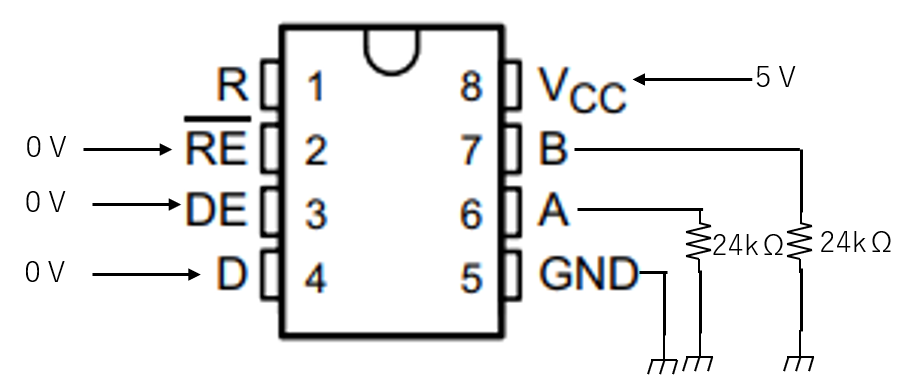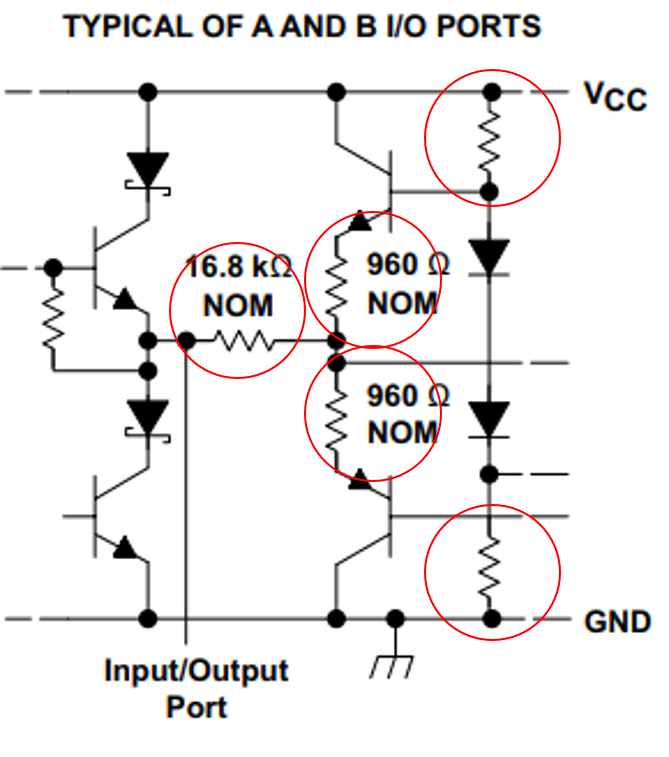Dear all,
I would like to ask the following questions.
As shown below, when 0V was input to RE, DE, and D pins(Vcc=5V), the output of A and B was 1.4V. I want to answer the following questions
1. I think that the current of 58μA flows out from the A and B pins, and it flows to GND through the pull-down resistor, so that 1.4V is output.
The data sheet includes the following.
In this description, only the voltage input to the A and B pins is 12V and -7V, but how much current flows when the input voltage is 1.4V?
2. I heard from the customer that the voltage on pins A and B was measured under the same conditions as above, and that there was a difference of several commas.
I think that this phenomenon is because there is a difference in the current flowing out of A and B, is it correct?
Also, if there is a difference, how much current difference is there?
Best Regards,
Y.Ottey



